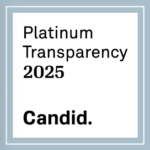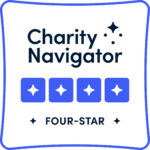During an April 7 session of the Biopharma Congress, Janet Woodcock, MD, former acting FDA Commissioner and former principal deputy commissioner of food and drugs, called the recent FDA staff cuts a “slow-moving catastrophe.”
Dr. Woodcock was referring to drug development, but the same could be said for medical device development. Devices will still move through the regulatory pathways, but the process could take longer, and there could be mistakes.
Jeff Shuren, MD, longtime director of FDA’s Center for Devices and Radiological Health (CDRH), who retired last year, said during Biopharma Congress and during a recent NAMSA webinar that “it would not be surprising if we saw longer review times, at least in the near term.”
That’s because CDRH recently lost 3,500 employees, many of them involved in premarket review. Some of those individuals could be reinstated—or not. And that’s if they decide to come back.
Dr. Shuren said FDA will need to focus on recruitment and retention as well as leverage digital tools to improve efficiency. Generative AI is a possible solution for certain tasks, such as email composition and similar low-risk tasks. The Digital Health Policy Navigator can help developers determine the regulatory status of a given software function.
R.I.P. open communication
Of the many concerns that arise from staff cuts, Martin Leon, MD, Mallah Family Professor of Cardiology at Columbia University, director of Columbia Care Center for Interventional Care at New York-Presbyterian Hospital, and founder of Cardiovascular Research Foundation, said he observed that FDA “no longer has a public-facing interaction capability.” That interaction refers to the early and open communication FDA worked for years to establish.
“What we were most proud of was the fact that we had open communication with the agency,” he said. “We could discuss regulatory science, we could brainstorm new ways to be able to improve how we manage certain approval processes…that dynamic of an open communication process was extremely helpful.”
Dr. Leon’s statement sparked a new question from webinar moderator and NAMSA Chief Medical Officer Adam Saltman, MD, PhD: Should the industry step in to fill in the gaps? Dr. Saltman referenced the Third Party Review Program, where accredited Third-Party Review Organizations can review low-to-moderate risk medical devices. Could we do more of that?
Juan Granada, MD, president and CEO of the Cardiovascular Research Foundation, said he would applaud potential public-private collaboration, such as between FDA and CROs, to assist with certain reviews. However, device clearance processes must remain standardized, and the collaboration must not add complexity to an already complex process.
Liberation Day dilemmas
Though not directly tied to FDA layoffs, the tariffs imposed by the current administration could be devastating to medical device manufacturing, commercialization, and innovation. “If you have to bring in materials that are more expensive, or are no longer available, or if we damage relationships with countries that have certain expertise, that’s going to affect importation, manufacturing, and cost,” said Dr. Granada. “And if someone puts tariffs on medical devices manufactured in the U.S. that’s going to make access even more complicated for countries that need them.”
Leon agreed, noting that FDA, NIH, and CDC have done a great job at fostering global connections. However, “tariffs really do fragment relationships, and those relationships have been forged over the course of decades,” he said.
To counter some of the negative chatter about globalization, Leon suggests manufacturers emphasize positive outcomes where possible. “Some of the most important medical products we’ve developed have resulted from global communications and global interactions because there is great science all around the world,” he said. “And when you put people together, it really is synergistic. So I would try to emphasize that it’s embedded within the entire innovation process. Make that a key point: we can’t function in isolation and expect to achieve what we’ve been able to achieve over the past several decades.”

